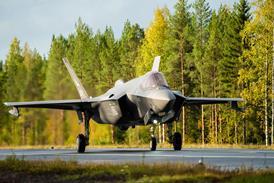Shane Bray is commercial director at Simon Jersey, the UK-based airline crew and corporate uniform specialist. It supplies 2.8 million garments a year and its clients include Emirates
How did you end up in the corporate uniform world?
I have worked in the clothing sector for almost two decades, and rejoined Simon Jersey after successfully buying shares in, developing and co-ordinating a full management buyout of a leading sportswear company.
While previously working at Simon Jersey between 2003 and 2005 I introduced a business platform that brought in trade worth more than £16 million ($25.5 million) in just two years, which included our largest single contract, Emirates Airline.
 |
|---|
© Simon Jersey |
How much of Simon Jersey's business comes from the aviation industry?
More than 20% of our business comes from the aviation industry and we work with airlines from across the globe. Our goal is to increase this figure.
Is supplying crew uniforms a competitive business?
In short, yes. To compete in this market your staff must have an absolute understanding of the requirements of airline crew. For example, a corporate clothing company that is not experienced in airline uniform design may overlook that fact that the blouses and shirts worn by cabin crew need to be longer as they are continually reaching up into the overhead lockers.
The fabric also needs careful consideration as crew need to look as immaculate at the end of a long-haul flight as they did when they boarded the aircraft. Turbulence can wreak havoc when food and drink are being served, so stain-resistant fabrics and finishes are key.
How involved do you get in the design stage when an airline is commissioning a new look?
It depends on what the client requires. Some enlist the services of a fashion house to design a look and feel, which we then interpret. Alternatively, our in-house design department can design the uniform from scratch based on the client's requirements and brand. This was demonstrated in our recent work with Emirates. We met employees at all levels to ensure that the new bespoke design reflected every aspect of the airline.
Finally the entire range was given the seal of approval from Dubai's leader Sheikh Mohammed bin Rashid Al Maktoum.
Airline crew uniforms have changed a lot over the decades, but recently the retro look appeared to be coming back. What are the main trends?
As with high street fashion brands the design of airline uniforms is a cyclical process. Some leading brands have working wardrobes that reflect the 1950s and 1960s, which are striking.
The trends depend on a variety of factors, from the cultural background of the company to the designs that are being worn on catwalks across the world.Only by getting to know an airline's strategic objectives and desired brand status can you design a uniform to suit them perfectly.
How important is crew uniform in an airline's brand message?
Uniform is vital, it is often the first time customers and potential customers will see the brand. Staff on check-in desks and greeting passengers as they board are the brand ambassadors.
Describe a typical week
There really is not a typical week. The week ahead includes internal budget meetings for 2010-11, external project updates with clients, checking on the progress and design of new client uniforms and two introduction meetings with major brands.
What are the best bits of the job...and the worst?
It is immensely satisfying to see crew wearing their new uniforms for the first time, especially when you have been working on a project for a long time.
The worse bit of the job is the lead generation time - I may be meeting someone next week who isn't due to review their current uniform for another year.
Source: Flight International























